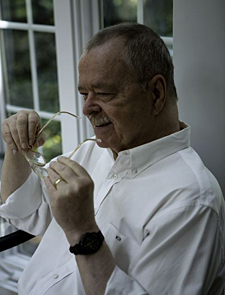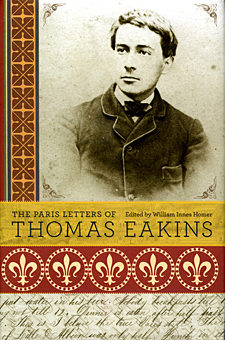- Rozovsky wins prestigious NSF Early Career Award
- UD students meet alumni, experience 'closing bell' at NYSE
- Newark Police seek assistance in identifying suspects in robbery
- Rivlin says bipartisan budget action, stronger budget rules key to reversing debt
- Stink bugs shouldn't pose problem until late summer
- Gao to honor Placido Domingo in Washington performance
- Adopt-A-Highway project keeps Lewes road clean
- WVUD's Radiothon fundraiser runs April 1-10
- W.D. Snodgrass Symposium to honor Pulitzer winner
- New guide helps cancer patients manage symptoms
- UD in the News, March 25, 2011
- For the Record, March 25, 2011
- Public opinion expert discusses world views of U.S. in Global Agenda series
- Congressional delegation, dean laud Center for Community Research and Service program
- Center for Political Communication sets symposium on politics, entertainment
- Students work to raise funds, awareness of domestic violence
- Equestrian team wins regional championship in Western riding
- Markell, Harker stress importance of agriculture to Delaware's economy
- Carol A. Ammon MBA Case Competition winners announced
- Prof presents blood-clotting studies at Gordon Research Conference
- Sexual Assault Awareness Month events, programs announced
- Stay connected with Sea Grant, CEOE e-newsletter
- A message to UD regarding the tragedy in Japan
- More News >>
- March 31-May 14: REP stages Neil Simon's 'The Good Doctor'
- April 2: Newark plans annual 'wine and dine'
- April 5: Expert perspective on U.S. health care
- April 5: Comedian Ace Guillen to visit Scrounge
- April 6, May 4: School of Nursing sponsors research lecture series
- April 6-May 4: Confucius Institute presents Chinese Film Series on Wednesdays
- April 6: IPCC's Pachauri to discuss sustainable development in DENIN Dialogue Series
- April 7: 'WVUDstock' radiothon concert announced
- April 8: English Language Institute presents 'Arts in Translation'
- April 9: Green and Healthy Living Expo planned at The Bob
- April 9: Center for Political Communication to host Onion editor
- April 10: Alumni Easter Egg-stravaganza planned
- April 11: CDS session to focus on visual assistive technologies
- April 12: T.J. Stiles to speak at UDLA annual dinner
- April 15, 16: Annual UD push lawnmower tune-up scheduled
- April 15, 16: Master Players series presents iMusic 4, China Magpie
- April 15, 16: Delaware Symphony, UD chorus to perform Mahler work
- April 18: Former NFL Coach Bill Cowher featured in UD Speaks
- April 21-24: Sesame Street Live brings Elmo and friends to The Bob
- April 30: Save the date for Ag Day 2011 at UD
- April 30: Symposium to consider 'Frontiers at the Chemistry-Biology Interface'
- April 30-May 1: Relay for Life set at Delaware Field House
- May 4: Delaware Membrane Protein Symposium announced
- May 5: Northwestern University's Leon Keer to deliver Kerr lecture
- May 7: Women's volleyball team to host second annual Spring Fling
- Through May 3: SPPA announces speakers for 10th annual lecture series
- Through May 4: Global Agenda sees U.S. through others' eyes; World Bank president to speak
- Through May 4: 'Research on Race, Ethnicity, Culture' topic of series
- Through May 9: Black American Studies announces lecture series
- Through May 11: 'Challenges in Jewish Culture' lecture series announced
- Through May 11: Area Studies research featured in speaker series
- Through June 5: 'Andy Warhol: Behind the Camera' on view in Old College Gallery
- Through July 15: 'Bodyscapes' on view at Mechanical Hall Gallery
- More What's Happening >>
- UD calendar >>
- Middle States evaluation team on campus April 5
- Phipps named HR Liaison of the Quarter
- Senior wins iPad for participating in assessment study
- April 19: Procurement Services schedules information sessions
- UD Bookstore announces spring break hours
- HealthyU Wellness Program encourages employees to 'Step into Spring'
- April 8-29: Faculty roundtable series considers student engagement
- GRE is changing; learn more at April 15 info session
- April 30: UD Evening with Blue Rocks set for employees
- Morris Library to be open 24/7 during final exams
- More Campus FYI >>
11:20 a.m., Sept. 9, 2009----The Paris Letters of Thomas Eakins, edited by William Innes Homer, H. Rodney Sharp Professor Emeritus of Art History at the University of Delaware, casts new light on the life of the world-renowned American artist from Philadelphia.
The book was issued by the Princeton University Press, and a special event celebrating its publication will be held Sunday, Sept. 20, at the Philadelphia Museum of Art.
The letters were written to Eakins's family and friends while he was a student of Jean-Léon Gérome and later of A.-A. Dumont and Léon Bonnat at the Ecole des Beaux-Arts from 1866-70. Homer, who is the author of Thomas Eakins: His Life and His Art (1992), has edited the letters and put them into context in terms of the recipients and Eakins's experiences in Paris.
The young Eakins was “independent, self-motivated, stubborn, opinionated and ambitious,” Homer said, and these traits emerge in his letters.
Although the sources for this correspondence have been scattered, most came from Charles Bregler's Thomas Eakins Collection at the Pennsylvania Academy of the Fine Arts in Philadelphia.
When Eakins's widow, Susan Macdowell Eakins, died and the house was cleaned out, discarded papers and other items were left behind. Bregler, a student of Eakins, collected and preserved what remained, which included many of the letters. The academy acquired the collection from Bregler's widow in 1985, and Homer has been working on gathering and editing the remaining letters for the more than 30 years. He is currently preparing a second volume of Eakins's later letters.
The letters present a lively and personal account of the artist's years in Paris -- his trip across the Atlantic, his battles with bedbugs and fleas, encounters with French bureaucracy as he labored to be accepted as a student at the Ecole des Beaux-Arts, descriptions of his art classes and rowdy classmates, his studies and progress in painting, his activities and explorations of the city and its art treasures.
As he finished up his stay in Paris, a confident Eakins, in a letter to his father, wrote, “What I have come to Paris for is accomplished.... I am as strong as any of Gerome[']s pupils and I have nothing now to gain by remaining. What I have learned I could not have learned at home....”
He continued by writing, “My worst troubles are over, I know perfectly what I am doing ....What a relief to me when I saw every thing falling in its place....”
Eakins left Paris for Spain, as Homer wrote, not only for its warm climate but because Spain would act as a “catalyst for his growing belief in the honest portrayal of real things, persons and events.” Eakins identified with the works of the Spanish painters -- “so good, so strong, so reasonable, so free from any affectation,” he wrote to his father.
The book has received numerous accolades from other Eakins scholars. The Library Journal reviewer called the book “meticulously edited and annotated” and rated it as “highly recommended for scholars and art history students as well as general readers and young adults.”
John Wilmerding, professor emeritus of American art at Princeton, called the book “invaluable” and wrote, “Both the artist's own observations and the attendant commentary are likely to be indispensible for all future Eakins publications.”
A graduate of Princeton University with master's and doctoral degrees in art history from Harvard University, Homer joined the UD faculty in 1966 and became professor emeritus in 1999. In addition to Thomas Eakins: His Life and Art, he is the author of nine books, including Stieglitz and the Photo-Secession, 1902; Alfred Stieglitz and the American Avant-Garde; and, with Lloyd Goodrich, Albert Pinkham Ryder: Painter of Dreams.
To celebrate the book's publication, “An Afternoon with Thomas Eakins” is being held at the Philadelphia Museum of Art at 2 p.m., Sunday, Sept. 20, with a dramatic reading from the artist's letters by actor Christopher Johnson portraying the young Eakins, followed by a reception and a guided tour of the Eakins Gallery by Kathleen Foster, director of the museum's Center for American Art. The event costs $25, or $10 for museum members. For more information and tickets, call (215) 235-SHOW or visit the Philadelphia Museum of Art Web site.
Article by Sue Moncure
Photo by Elizabeth Hyer Rose




